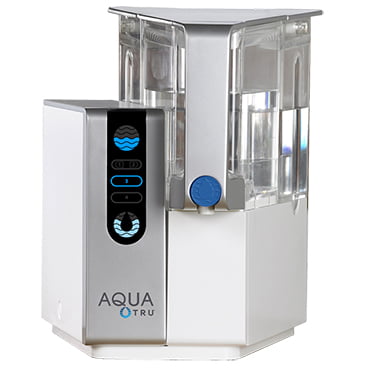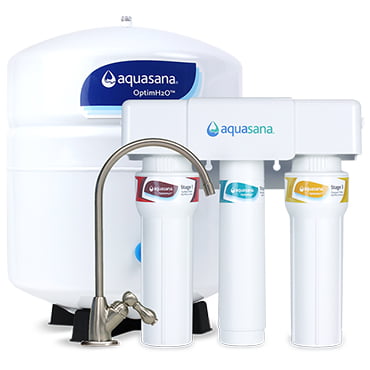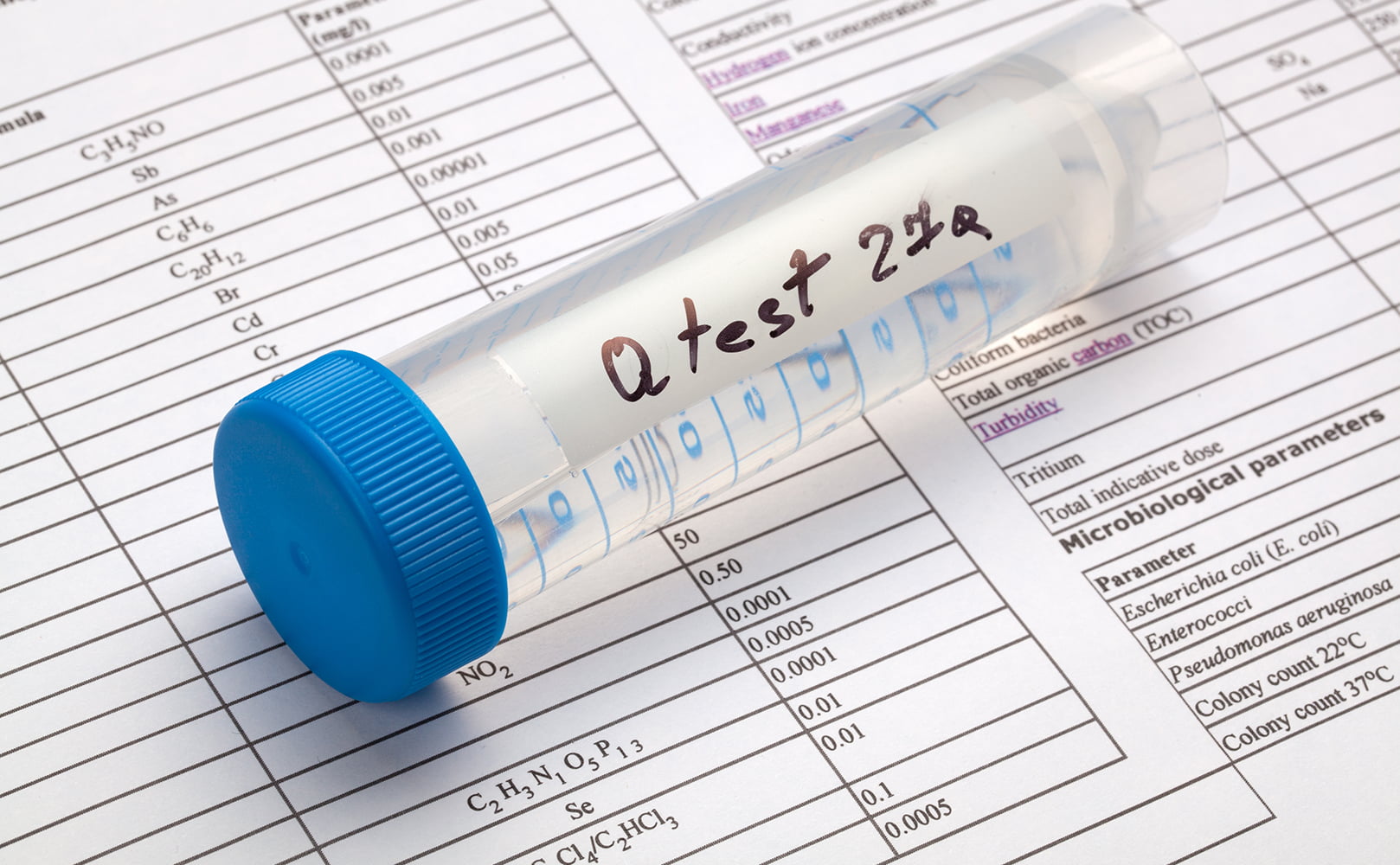Does Reverse Osmosis Remove Lead from Water?
Written by: Gene Fitzgerald // Last Updated: Mar 7, 2023
This page may contain affiliate links. If you buy a product or service through such a link we earn a commission at no extra cost to you. Learn more.
Chalk it up to the Flint Crisis or the one in Newark; many Americans are now worried about the level of lead in their drinking water. On the other hand, plenty of others find poor taste and hardness as potential issues.
Nevertheless, you must aim to eliminate both aesthetic and health contaminants from your drinking water supply to promote optimal hydration.
In the realm of water filtration, you will find quite a few techniques and methods. Each one uses a different technology to target a distinctive set of impurities. So, which water filtration technology can eliminate lead?
The answer is simple: reverse osmosis among a few others. In this short guide, you will find out all there is to know about lead poisoning and how reverse osmosis systems can ensure you receive safe and healthy water – free of lead.
Key Takeaways
- Reverse osmosis is a great method to remove lead from your water supply.
- Most reverse osmosis systems can remove more than 90% of lead content, while the most effective ones can reject over 99% of lead.
Does Reverse Osmosis Remove Lead?
The short answer is yes; reverse osmosis can effectively reduce lead from your water supply. In addition, the RO process is simple, quick, and effective.
Although some activated carbon, KDF, and ion exchange filters can effectively remove over 95% lead, reverse osmosis offers you the most out-and-out and precise filtration. Put simply, RO filtration provides a simple yet extraordinary process to improve water quality.
As water passes through the reverse osmosis membrane, almost all molecules other than water are left behind. As a result, reverse osmosis can remove hundreds of common and lesser-known contaminants – enhancing the taste, removing smells, and making your water healthy to consume.
In a nutshell, RO-purified water provides hydration at its best.
How Much Lead Does Reverse Osmosis Remove?
Most reverse osmosis systems remove more than 90% of lead from water. Some systems are so effective they can even reject over 99% lead.
For example, the AquaTru removes 99.1%, while the Aquasana OptimH2O is certified to remove over 99.3%.
Please keep in mind that the maximum content goal for lead in drinking water is zero, instead of the actionable level of 15 parts per billion. This is because lead is bioaccumulative in your body and can cause serious health concerns if exposure continues for a long time.
Therefore, you should aim for a water filtration system that removes the maximum amount of lead. Even a slight difference of a few percentage points of removal can mean you are exposed to a much higher concentration of the toxic metal.
All in all, lead removal should be as precise as possible. That’s why the logical approach for RO technology is to combine it with granular activated carbon and possibly other filter media to offer maximum purification.
#1 Reverse Osmosis System for Lead: AquaTru
- Our #1 Reverse Osmosis System for Lead and Overall
- Provides Clean and Great-Tasting Drinking Water Fast
- Removes Up to 99.99% of 82+ Contaminants (99.1% Lead Reduction)
- NSF Certifications: 42, 53, 58, 401, P473, P473
- Installation-Free Plug & Play Unit – Ideal for Renters
- Maintenance Is a Breeze and Super Low-Cost
- → Read the Full Review
For Under the Sink: Aquasana OptimH2O
- 99.3% Lead Reduction
- Affordable!
- 5x NSF-Certified
- Remineralizes Water for Best Taste
- → Read Full Review
How Does Reverse Osmosis Remove Lead?
Reverse osmosis features a semi-permeable membrane that can reject hundreds of potential contaminants as water passes through it. The RO membrane has a pore size of around 0.0001 microns. This is enough to stop lead and many other harmful impurities.
Please note that water pressure, solute concentration, quality of raw water, and other conditions greatly affect the performance of an RO membrane.
It’s also important to mention that RO filtration systems feature more than just the reverse osmosis membrane. Most amalgamate multiple filter elements, including granular activated carbon, block carbon, catalytic carbon, and ion exchange or KDF filter media, that are also effective at lead removal.
What Else Does Reverse Osmosis Remove?
A reverse osmosis membrane can eliminate many types of dissolved and suspended compounds as well as microorganisms from water.
Typically, RO membranes can filter out 95%-99% of organic + inorganic material, including hardness. However, some elements should be pre-filtered out to avoid premature fouling of the RO film. Therefore, all RO systems have multiple pre-filters to avoid ruining the membrane.
An RO system also features post-filters that polish the water and add the final touches making it suitable to drink.
Here are a few contaminants that an RO system can remove:
- Sodium
- Chlorine and chloramine
- Disinfection byproducts
- Copper
- Chromium 6
- Lead
- Arsenic
- Fluoride
- Radium
- Sulfate
- Nitrate
- Phosphorous
- PFOS
- Pesticides/herbicides
- VOCS
- Bacteria, viruses, cysts, mold
What Is Not Removed By Reverse Osmosis?
Although reverse osmosis removes a wide range of contaminants, alone it’s ineffective against many chemicals like pesticides, solvents, and volatile organic compounds.
This is why RO systems feature pre and post-filters. The combination of different filtration methods and filter media makes all the difference.
Testing Your Home Water for Lead
Since you cannot see, taste, or smell lead in water, the only way to determine if you are at risk is to test your water.
The most reliable way to test for lead is to hire a certified laboratory. The results will show you the precise concentration of lead in your water source so you can find the best filtration technique to eradicate it.
If you are short on time or budget, you can also use lead home water test strips. They are simple, safe, and easy to use.
However, the strips will only tell you whether or not your water is contaminated with lead. It won’t highlight the concentration of lead, nor will it detect any other contaminants present in the water.
Drawbacks of an RO Water Filter System
Is reverse osmosis always the ideal filter for a home? The simple answer is no; not all households require RO filtration for their water. Besides:
Wastewater
While operating, RO systems produce a constant flow of wastewater used to flush the RO membrane. This water flows down the drain unused. You’d be surprised to know that the standard ratio of wastewater to RO water in a filtration system is 4:1.
In simple terms, for each gallon of purified water, the RO unit washes 4 gallons down the drain.
Not only is this unsustainable, but you will also notice your water bill creeping up.
Healthy Impurities Are Also Removed
What’s worse is that an RO membrane removes a lot of good minerals along with the bad ones. According to the World Health Organization, low TDS water (RO water) can have negative impacts if consumed in the long term.
Not only is your body deprived of healthy minerals like calcium and magnesium, but low mineral content also makes your water taste rather unpleasant – something RO water is famously known for.
An easy workaround: Remineralize your RO purified water before consumption. You can either do this manually by adding mineral-rich sea salt or a mineral blend. Or you install a remineralization filter on your reverse osmosis system.
Impact of Lead Poisoning on Our Bodies
Lead poisoning may be caused by long-term exposure to lead through drinking water. Exposure to even low levels of lead over time can cause multiple adverse health effects since it accumulates in your body.
First, it enters your system through the bloodstream, and then your body stores it in your organs, tissues, bones, and teeth. From there, lead can spread throughout your body and damage the entire system.
Although adults are severely affected by lead exposure, it’s way worse for children causing irreversible harm. The most significant risk is to the brain and physical development in young kids. In adults, lead exposure can cause high blood pressure and kidney damage.
Since lead can also pass through the placental barrier, pregnant women are at high risk of miscarriage, stillbirth, premature birth, and low birth weight.
What to Consider When Buying an RO System
Lastly, here are the factors that you must consider when buying an RO system:
System Type
You can select from the three main types of RO systems:
- Under sink RO water filters
- Countertop RO water filters
- Whole house RO water filters
The key difference between under sink and countertop systems is that one stays on the counter and the other beneath it. Both are point-of-use filtration systems that treat water only at one faucet, usually the kitchen sink.
On the other hand, whole house RO systems are point-of-entry filtration units that treat every single drop of water around the house. We don’t recommend installing a whole house RO system, though, unless you have a high level of a specific contaminant that is most economically reduced by reverse osmosis.
NSF Testing and Certifications
The most important thing to consider when buying RO or any other water filtration system is to read the fine print and find out if it’s NSF-certified. Look for NSF Standard 58, which addresses the minimum requirements for the reduction of a whole range of contaminants including lead.
Filter Process
The highest quality RO systems feature multiple stages of filtration to ensure your water is free from a broad spectrum of impurities. Look for those that come with multiple pre-filters (sediment and carbon) and post-filters (carbon and remineralizer) to ensure crisp, healthy, and wholesome water.
Water Demand, Pressure & Wastage
Since RO systems backwash to flush the membrane, you need to have adequate incoming water pressure (60 psi).
Similarly, some RO systems come with an inbuilt pressure pump that increases the water outflow rate and decreases the amount of wastewater produced by the system. They may be on the pricier side, but they are faster and eco-friendly.
Installation + Maintenance
A reverse osmosis system needs a storage tank and drain line. Thus, it features a more complicated installation process than other types of home water filters. You may need to hire a professional which will add up the costs. You can find out more about how to install a reverse osmosis water filter system here.
Similarly, chlorine and sediment can easily damage an RO membrane. Therefore, you must ensure that pre-filters are not clogged. Ensure proper RO system maintenance and timely replacements of all elements.
Moreover, unless you test your water through a TDS meter frequently, there is no easy way to tell if the RO membrane is still working or not.
Cost
RO water filter systems are not the most economical water filters around. They can cost several hundred dollars.
If you have any thoughts about the question, does reverse osmosis remove lead, please don’t hesitate to leave a comment below!
Information provided on BOS is for educational purposes only. The products and services we review may not be right for your individual circumstances.
We adhere to strict editorial guidelines. Rest assured, the opinions expressed have not been provided, reviewed, or otherwise endorsed by our partners – they are unbiased, independent, and the author’s alone. Our licensed experts fact-check all content for accuracy. It is accurate as of the date posted and to the best of our knowledge.





